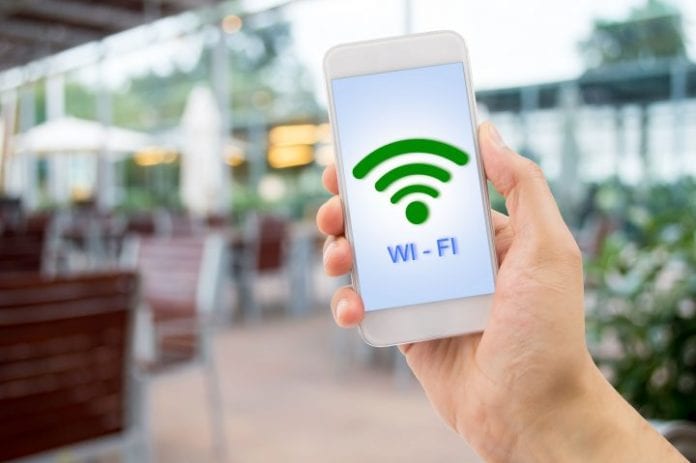With the majority of cellular usage having moved indoors, being able to locate a user while inside a building is becoming increasingly important for public safety or services such as indoor navigation. However, satellite-based GPS data can be difficult or impossible to access when a user is inside, or insufficient to accurately locate someone in a multistory building.
One option to solve that issue is by using Wi-Fi – and Wi-Fi Alliance launched a certification program this week that relies on the Institute of Electrical and Electronics Engineers Fine Timing Measurement protocol to deliver meter-level accuracy in positioning. According to Kevin Robinson, VP of marketing for WFA, “Wi-Fi really does stand out as a technology that is an obvious candidate for improving indoor location capabilities.”
Existing indoor or outdoor location technologies typically rely on one of three approaches, Robinson said: received signal strength; time of “flight”; or a directional approach. Most implementations take the signal strength strategy, he added, which can vary in accuracy depending on a number of environmental factors and can be expensive depending on the deployment type. Beacon-type deployments often tend to have limited range, Robinson added.
Indoor location of Wi-Fi access points is information that would be added during the configuration process, Robinson said, so that individual APs could be given very specific addresses that identify their position. This can enable a data source for services such as turn-by-turn indoor directions within buildings – such as directions to a gate at an airport, Robinson said, or other applications such as asset tracking in a hospital, manufacturing facility or warehouse. The data can also be leveraged by public safety.
Wi-Fi Alliance’s test bed for Wi-Fi Certified Location includes devices and/or chips from Broadcom, Marvell, Qualcomm, Intel and Realtek.
Indoor positioning data has implications for indoor network testing as well. Test company Accuver this week announced an automatic indoor positioning feature for its XCAL-Harmony backpack test set up that holds up to six smartphones for indoor testing. The company said the new feature speeds up indoor testing by eliminating the need for a user to manually click to record their position on the screen, which is typically how such data is entered.
The Federal Communications Commission in 2015 adopted rules mandating improved accuracy in reporting cellular users’ location – including the ability to identify the height at which a user is located, with requirements phased in until 2024.
In order to help cellular operators meet those requirement, industry trade group CTIA is working on indoor location testing with its 911 Location Test Bed. The program earlier this month began inviting companies to take part in a third stage of testing. The first two stages, according to CTIA, “focused on verifying the indoor performance of existing or commercially available 911 location technologies,” while the third stage “will now focus on location technologies in a variety of production-ready stages.”
Image copyright: cunaplus / 123RF Stock Photo

